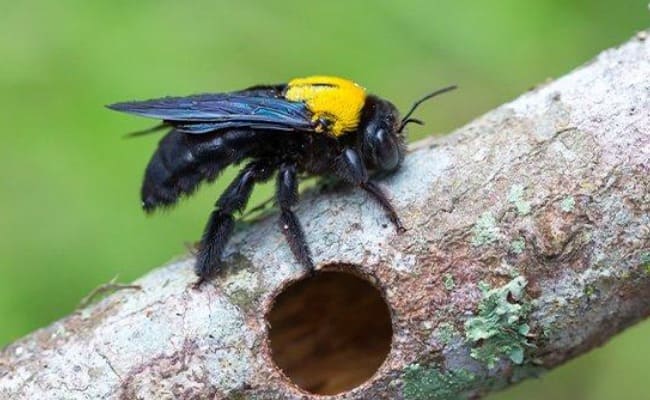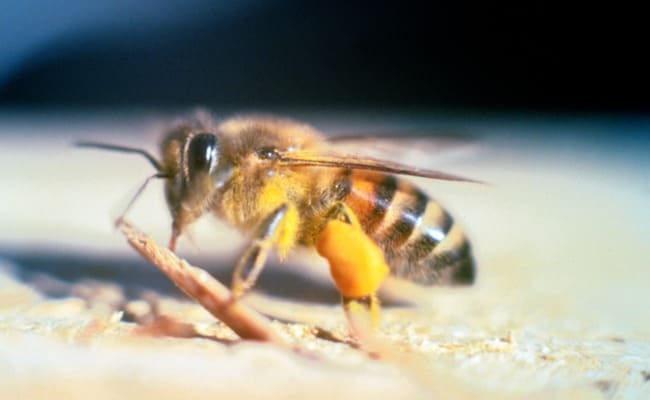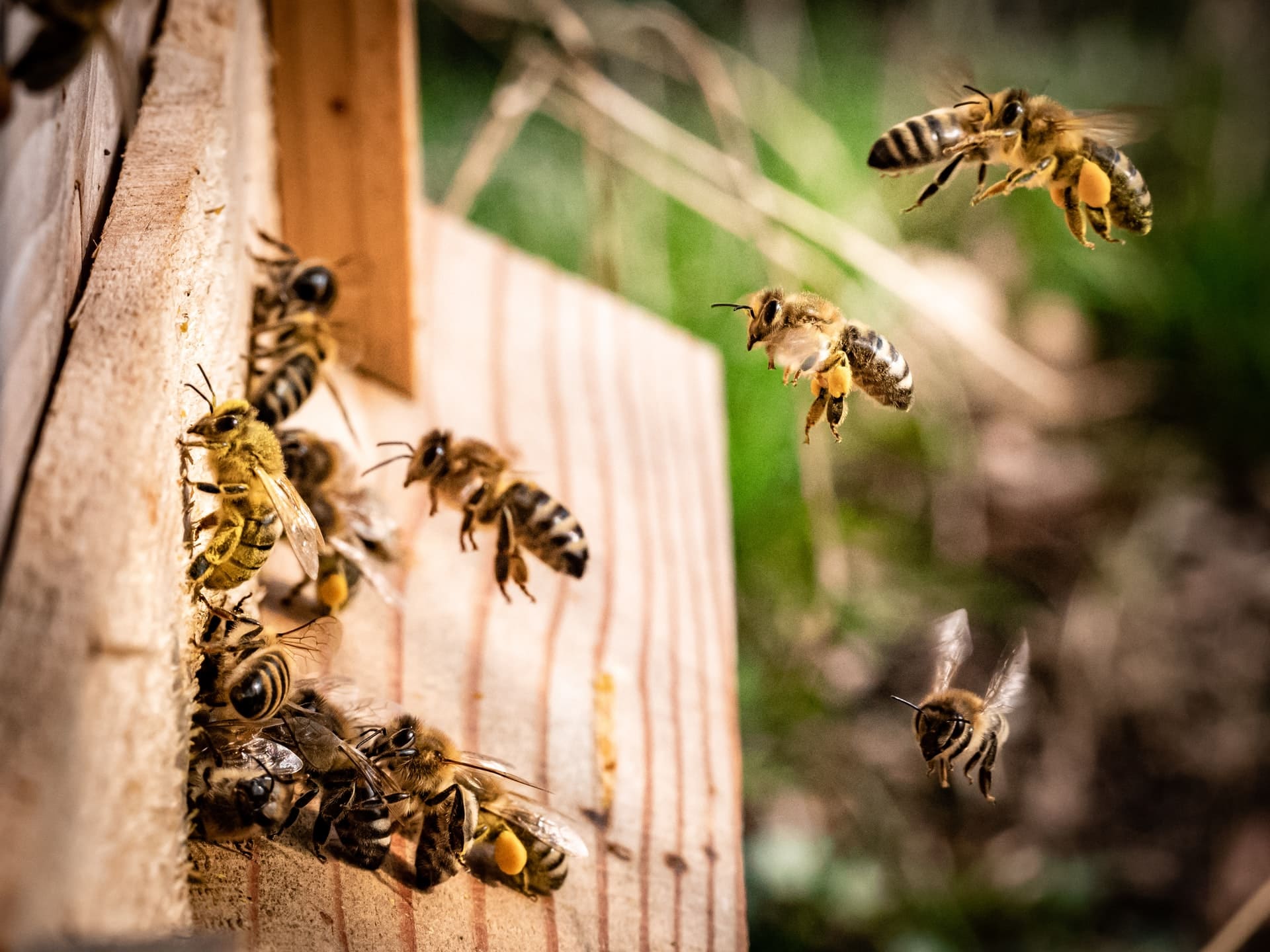Bee Removal

We have all come across bees at some point in our lives and it is for good reason. After all, they have always been the number one pollinator of crops in the world. There may be other pollinators out there but these are ranked the world’s most important, and pollination of crops is important because without it we would not have a lot of the food that we eat today. As important as these insects are to human life in general, it can get annoying when a hive decides to make their nest in your home.
In truth, they don’t attack unless they are provoked, but when they do, the stings are particularly painful. To make matters worse, getting sting by many of them at once could result in a state of shock that could even lead to death if not taken care of in time. So while they are important, an infestation around you might not be the best idea. Green Palm Pest Control professionals are among the most credible bee exterminators in the South Florida area, so feel free to give us a call if you are facing an infestation problem.
What kinds of bees are there?
Understanding the type of bees that exist is the first step in understanding the best way to remove them. Most bee removal experts know this to be a cardinal rule that helps determine exactly how the they are removed from the place that they have chosen to nest.

Bumble bees
One of the signs of a hive of bumblebees is the relatively small size. Bumblebee hives are usually small, containing bees in the hundreds only. There is a queen lays the eggs for the small colony, and also runs the entire hive. The drones are in existence solely to mate with the queen, and the most numerous worker bees keep the hive running smoothly. They are considered the best pollinators of flowers, thanks to their fuzzy or hairy nature which enables them to carry more pollen. These kinds of insects like to build their hives at the ground level, so it is common for hives to exist in holes abandoned by rodents and under sheds and so on.
Carpenter bees
They are also sometimes referred to as wood bees because of the fact that they prefer to burrow into wooden surfaces, carving out extensive galleries in which they make their nests. You will most likely find them in tree barks, telephone posts, rafters and other wooded surface where they are likely to drill into. Unlike bumblebees, these bees are far less social, and rarely appear in large numbers. However, their population can grow as they continue to burrow into the wooden structure, and this can prove problematic because the stability of the structure may begin to deteriorate.


Honey bees
These are by far the most social species of bees to ever exist. In size, they are far smaller compared to carpenter and bumble bees, but what they lack in size, they more than make up for in sheer numbers. A single hive can host tens of thousands at one point, and that number can be very disturbing in a case of infestation near residential premises. They make their hives within hollowed out logs, fence posts, and in rare cases, inside attics of houses.
Africanized Honey bees
These may be similar to common honey bees, but the major difference is the fact that they can attack even if they are not provoked, so long as they see you as a threat. They also tend to cover a much larger area in terms of territory and nesting than typical honey bees. They can be considered the most dangerous since they often attack in large numbers, and their attacks are more than often quite fatal.


Bee removal methods
This method of bee removal involves the actual physical removal of a beehive from the place of infestation to another. This is the work of the well trained professionals who will do so in a controlled environment, complete with the necessary protective gear. Depending on the type of hive, it may need to be cut out completely. These are then transported to well-trained beekeepers, where they continue to reproduce in a humane way.
These are mostly effective for small numbers such as those of carpenter bees. Simply put, they involve trapping them so that they are forced to exit the places that they have burrowed into. A proper trap mimics an actual nest, luring the buzzers into it so that they abandon their actual nests; once they enter the trap they cannot get out, and can then be safely removed from the premises.
We must realize that our poor actions are contaminating the natural environment surrounding us, which could prove to be hazardous for upcoming generations to come. We should give them, what we have been blessed with in the best of the best condition.
This is the physical removal of these insects from their actual nesting spot by use of specially made vacuums that gently suck them out and away from the nest. They can then be transported to a new home at a proper keeping site where they can continue to live in a new home.
In some cases, the situation may require the actual extermination of the bothersome creatures by the bee exterminators. It is often recommended as a last resort and will often involve the use of chemicals that kill them or destroy their nests entirely. They are then disposed of and the affected area cleaned out entire area to prevent future resurgence.
If you are ever faced with a bee infestation problem, you can try and deal with it yourself if it is just a few of them. Some traps are designed in a way that you can set them up by yourself and capture them before they become more of a nuisance. If the infestation is huge, do not attempt to take care of it on your won. Remember that bees must be kept alive at all costs, so rushing to purchase sprays and other chemicals that could kill them should absolutely be your last resort. The best move is to contact Green Palm Pest Control Services for a detailed inspection session.
Once the extent of the infestation has been established, our team of experts will advise you on the best option that will leave your home bee-free. They will then handle it in a safe way, providing you the quality service that will ensure that no bees are left to plague you anymore. Get in contact with our team today if you are in the South Florida area, and get started removing the bees from your home.

